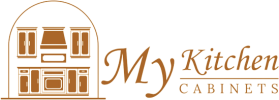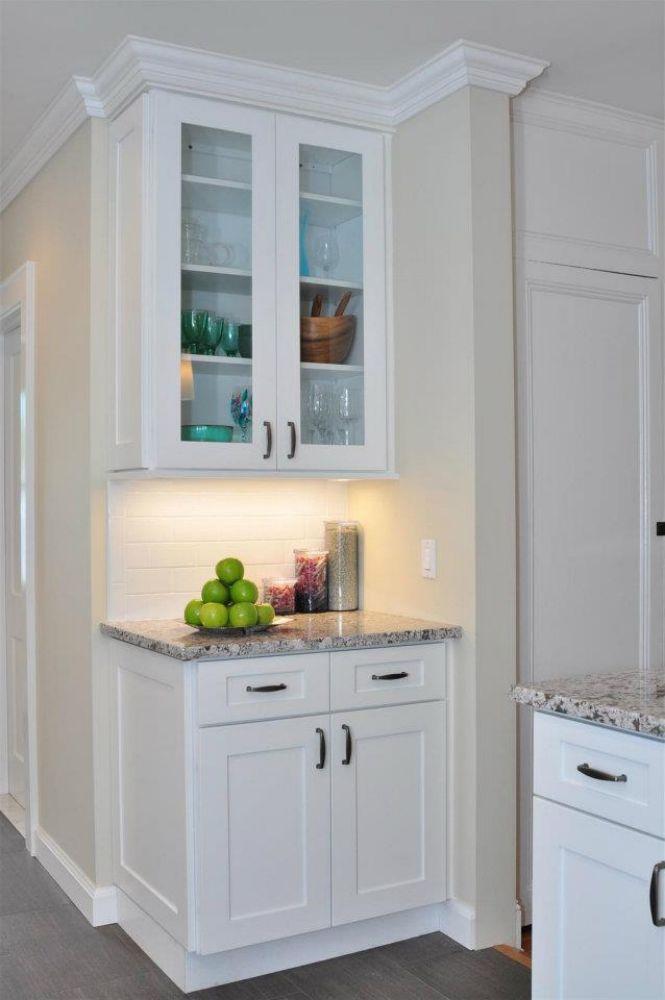The Importance of Ventilation in Modern Cabinet Installations
When homeowners remodel or build new kitchens, bathrooms, or laundry areas, cabinetry is often one of the most exciting parts of the project. However, what many don’t realize is that proper ventilation plays a crucial role in ensuring that new cabinets not only look beautiful but also contribute to a healthy indoor environment.
The Role of Ventilation with New Cabinets extends far beyond comfort—it directly affects indoor air quality, material longevity, and even overall home safety. New cabinets, particularly those made from composite wood materials or treated with protective coatings, can release volatile organic compounds (VOCs) and other emissions that need adequate airflow to disperse safely.
Ventilation ensures that these compounds don’t build up in enclosed spaces, keeping your indoor environment fresh, safe, and comfortable. To fully understand how ventilation and cabinet quality work together, it’s essential to explore certified cabinetry options such as those offered under the Role of Ventilation with New Cabinets collection by My Kitchen Cabinets—specifically designed with health and air quality in mind.
Understanding Why Cabinets Emit VOCs and Odors
Most new cabinets—especially those made from engineered or composite woods like MDF or particleboard—use adhesives, resins, and finishes that can emit VOCs over time. These emissions, known as “off-gassing,” occur when volatile compounds evaporate into the air.
Common VOCs found in cabinetry include:
-
Formaldehyde (from adhesives and finishes)
-
Toluene and Xylene (from solvent-based paints and coatings)
-
Acetone and Ethylbenzene (used in varnishes and glues)
Even in small amounts, these compounds can cause headaches, eye irritation, and allergic reactions. Without proper ventilation, VOC concentrations can rise, affecting indoor air quality and comfort levels.
Ventilation allows these gases to dissipate naturally, helping the space reach a safe and balanced air quality more quickly after installation.
The Connection Between Ventilation and Indoor Air Quality
Indoor air quality is influenced by the materials used inside a home and how well air circulates throughout it. New cabinets, paint, flooring, and furnishings all contribute to air composition. When ventilation is inadequate, pollutants can linger, creating an unhealthy environment.
Proper ventilation helps to:
-
Dilute pollutants such as VOCs and formaldehyde.
-
Regulate humidity, preventing mold or mildew behind cabinets.
-
Balance temperature, especially in kitchens where heat can affect cabinet finishes.
-
Protect respiratory health by ensuring fresh oxygen circulation.
Incorporating ventilation strategies into cabinet installation plans ensures that air moves freely throughout the space, maintaining freshness and cleanliness.
Initial Ventilation Needs After Cabinet Installation
After installing new cabinets, it’s normal to notice a mild “new cabinet smell.” This odor typically comes from the curing process of finishes, sealants, and adhesives. In enclosed spaces like kitchens, bathrooms, or offices, this odor can become concentrated without sufficient airflow.
To improve post-installation air quality, homeowners should:
-
Open windows and doors for at least several days to allow natural air exchange.
-
Use exhaust fans or air purifiers with activated carbon filters to capture VOCs.
-
Avoid sealing the space too tightly during the first few weeks after installation.
-
Run HVAC systems on circulation mode to enhance airflow throughout the home.
These practices significantly reduce off-gassing effects and help your new cabinets settle into your environment safely.
Long-Term Role of Ventilation in Cabinet Maintenance
The Role of Ventilation with New Cabinets does not end once installation is complete. Long-term airflow management is key to preserving cabinet materials, finishes, and air quality over time.
Consistent ventilation helps by:
-
Preventing moisture buildup: Cabinets near sinks, dishwashers, or showers are prone to humidity exposure. Proper airflow prevents warping and delamination.
-
Reducing odor retention: Continuous ventilation ensures that food, cleaning supplies, or chemical smells don’t get trapped in closed cabinets.
-
Extending lifespan: A well-ventilated space helps finishes cure naturally and prevents damage from condensation or temperature fluctuations.
By maintaining steady air circulation, homeowners can protect their cabinetry investment and enjoy healthier living spaces.
The Role of Ventilation in Greenguard Gold Certified Cabinets
One of the best ways to ensure that new cabinetry contributes to healthy indoor air quality is to choose products that already meet low-emission standards. Greenguard Gold Certified Cabinets are specifically tested to ensure they emit minimal VOCs and other harmful chemicals.
However, even certified cabinets benefit greatly from proper ventilation. Airflow enhances the effectiveness of low-emission materials by dispersing trace levels of VOCs more efficiently. This ensures the safest possible indoor environment, particularly in newly constructed or remodeled homes.
Greenguard Gold-certified cabinets, like those offered by My Kitchen Cabinets, represent the ideal combination of quality craftsmanship and air safety. With the right ventilation, they create a living space that meets modern wellness and sustainability standards.
Types of Ventilation Systems Beneficial for Cabinet Areas
Different spaces require specific ventilation methods to maintain clean, breathable air around cabinetry. Some of the most effective options include:
1. Natural Ventilation:
Opening windows and doors provides a natural, cost-effective way to improve air circulation. Cross-ventilation allows air to flow through the entire space, quickly dispersing VOCs.
2. Mechanical Ventilation:
This includes exhaust fans, range hoods, and whole-house ventilation systems. These actively pull stale air out while introducing fresh air indoors.
3. HVAC Systems with Air Exchange:
Modern HVAC systems can incorporate energy recovery ventilators (ERVs) or heat recovery ventilators (HRVs) that maintain indoor comfort while exchanging stale air for fresh air.
4. Air Purifiers:
Using air purifiers with activated carbon filters can trap and neutralize VOCs, helping maintain air purity after cabinet installation.
Each of these systems plays a unique role in balancing air quality and protecting cabinet integrity.
Managing Humidity Levels Around Cabinets
Humidity control is a critical component of ventilation. Excess moisture can warp wood, damage finishes, and promote mold growth. Meanwhile, extremely dry air can cause cracking or shrinking.
To maintain an optimal environment for new cabinets:
-
Keep indoor humidity between 35% and 55%.
-
Use dehumidifiers in areas like basements or bathrooms.
-
Ensure kitchen range hoods are vented outdoors, not just recirculated.
-
Install vent grilles or toe-kick vents** at the base of cabinets to improve airflow.
Balanced humidity ensures that your cabinets retain their shape, finish, and structural integrity for years.
Designing Cabinet Layouts with Ventilation in Mind
When designing cabinetry, airflow should be a key consideration. Cabinet placement and spacing can either improve or hinder ventilation.
Here are some design best practices:
-
Leave a small gap behind and above cabinets to allow air circulation.
-
Avoid sealing cabinets tightly against walls with no ventilation channels.
-
Include vent slots or decorative grilles in built-in cabinets to encourage airflow.
-
If cabinets surround appliances like ovens or refrigerators, ensure adequate clearance for heat dissipation.
By integrating ventilation-friendly design principles, you enhance not only cabinet performance but also overall air quality in your home.
The Relationship Between Ventilation and Cabinet Finishes
Cabinet finishes—especially paints, stains, and sealants—require proper ventilation during and after application. This ensures safe curing and prevents surface imperfections caused by trapped humidity or chemicals.
Water-based and low-VOC finishes dry faster and emit fewer fumes, but they still benefit from steady air movement. Proper airflow helps finishes reach their intended hardness and prevents lingering odors.
Homeowners who maintain good ventilation during finishing and installation can expect smoother surfaces, more durable finishes, and a cleaner indoor atmosphere.
Protecting Indoor Spaces During Seasonal Changes
Seasonal shifts affect both air circulation and cabinet performance. During colder months, homes are often sealed tight, limiting ventilation and trapping pollutants. In warmer months, humidity levels may rise, putting stress on cabinet materials.
To manage seasonal ventilation:
-
In winter, use heat recovery ventilators (HRVs) to introduce fresh air without losing heat.
-
In summer, run dehumidifiers and ceiling fans to maintain comfortable humidity.
-
Periodically air out the home, even during extreme weather, to refresh indoor air.
These steps ensure consistent air quality and cabinet preservation year-round.
The Role of Ventilation in Sustainable Home Design
Sustainability in home design extends beyond material selection—it includes energy-efficient and health-conscious practices like ventilation. Modern green homes integrate advanced ventilation systems that optimize indoor comfort while minimizing environmental impact.
Greenguard Gold-certified cabinets complement these sustainable designs by reducing emissions at the source. When paired with proper ventilation, they create a synergy that supports both ecological responsibility and human wellness.
Good ventilation also reduces the need for chemical-based air fresheners or cleaners, further promoting an eco-friendly lifestyle.
Preventing Mold and Bacteria Growth Behind Cabinets
Without ventilation, cabinets—especially those near plumbing—can become hotspots for moisture accumulation. Over time, this can lead to mold, mildew, and bacterial growth that compromises both air quality and structural integrity.
Installing vented toe kicks, small fans, or passive air channels behind and under cabinets helps air circulate freely. In high-humidity areas like bathrooms or laundry rooms, this is particularly essential to prevent microbial growth.
Maintaining airflow in hidden spaces ensures that your cabinets remain fresh, hygienic, and odor-free.
How Ventilation Protects Cabinet Investment
Cabinets represent a significant investment in any home. Proper ventilation safeguards that investment by reducing wear, preventing damage, and maintaining a healthier environment.
Benefits include:
-
Extended cabinet lifespan through reduced moisture exposure.
-
Enhanced finish durability due to stable air conditions.
-
Protection from mold, odor, and chemical buildup.
-
A fresher and more comfortable living environment.
By pairing quality materials with proper ventilation, homeowners maximize both the performance and longevity of their cabinetry.
The Future of Cabinet Design and Air Quality
As sustainability and wellness continue to drive design trends, ventilation will remain a fundamental element of cabinetry and interior construction. Future innovations may include built-in air channels within cabinetry, smart ventilation sensors, and materials that naturally absorb VOCs.
The integration of Greenguard Gold-certified cabinets with intelligent air management systems represents the next evolution in home health and safety. These advancements will continue to make homes safer, cleaner, and more energy-efficient.
Conclusion
The Role of Ventilation with New Cabinets is critical to maintaining both cabinet quality and indoor health. Whether you’re installing custom wood cabinetry or Greenguard Gold-certified models, proper airflow ensures that your home remains free from excessive humidity, chemical emissions, and trapped odors.
Ventilation supports the safe curing of finishes, prevents damage from moisture, and enhances the overall comfort of your space. By combining certified low-emission cabinets with effective ventilation strategies, homeowners create environments that are as healthy as they are beautiful.
Every breath you take indoors should be clean and refreshing—and with proper ventilation, your new cabinets will enhance both your home’s elegance and its air quality for years to come.

